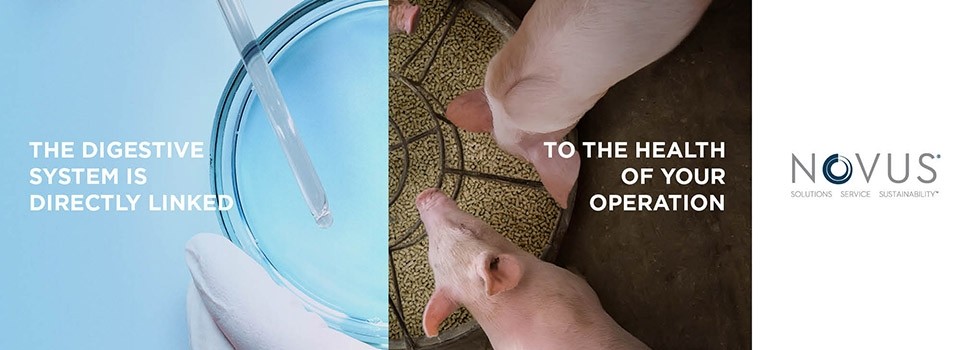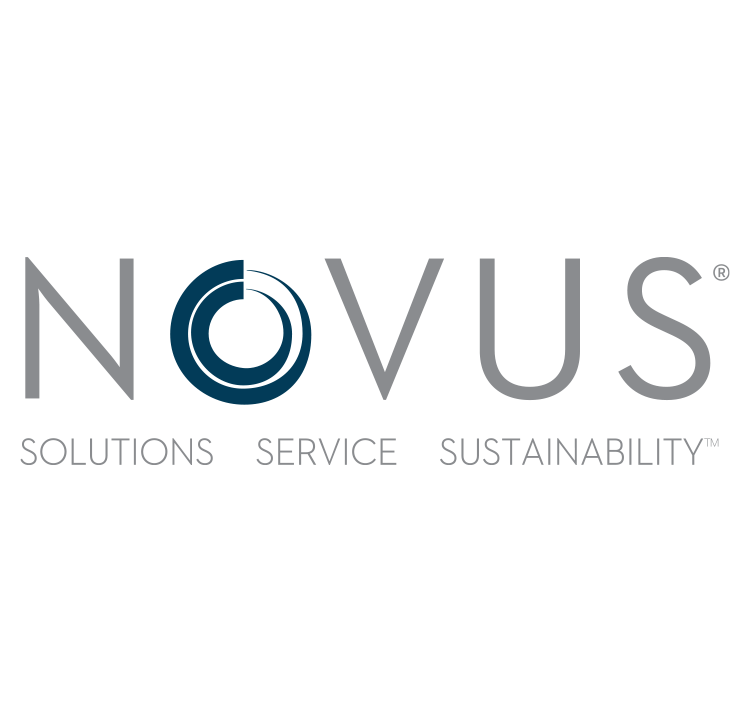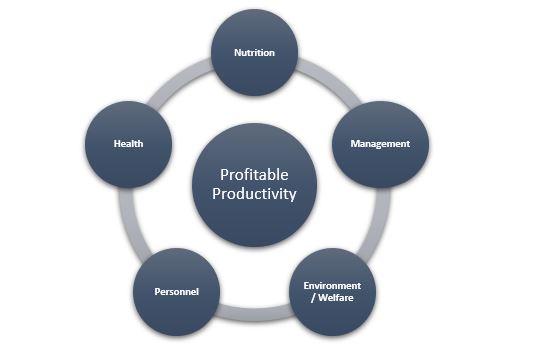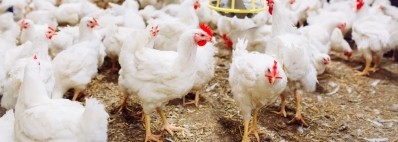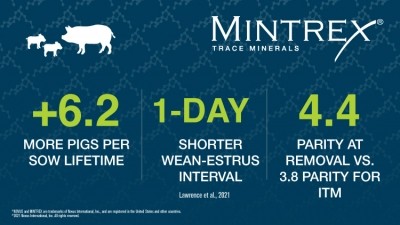Promotional Features
Improving swine production profitability with the use of bis -chelated trace minerals
By Bradley Lawrence, Marcela García, Alex Hintz of Novus International, Inc.
Pork producers have the mission to deliver high quality animal protein to feed the world. There are, however, no shortages of challenges at all production phases. These challenges must be overcome to meet this mission in an economically and environmentally sustainable way; it is key for the survival and growth of swine operations. Differentiating financial drivers that cannot be controlled from those that are controllable is vital. Price, demand, global economics, politics and pandemics are out of a producer’s control, but efficiency on the farm can be controlled.
In terms of profitable productivity there are five key focuses:
1) Nutrition
2) Management
3) Health
4) Environment/Welfare
5) Personnel
All areas must be in balance to achieve production objectives. However, in terms of production costs, some of them have more impact than others. According to PIC Benchmark, feed cost represents 60% of the total production cost in the United States, while in Latin America this percentage could reach as high as 80% in some cases.1 Therefore, providing precise nutrition to pigs through all production stages is instrumental to reach the profitability target.
Good beginnings typically result in exceptional ends. Maximizing breeding herd performance is crucial for a pork operation’s overall efficiency. Management and optimal nutrition strategies beginning in gilt development and continuing through the sow’s productive lifetime can make more of an impact on production costs than many strategies to improve efficiency of the wean-finish pig, dramatically impacting a swine operation’s economics.
Modern sows require modern nutrition: The case for bis-chelated trace minerals
Optimal maternal nutrition is key for reproductive and offspring performance. Litter size, piglets total born and birth weight parameters are impacted by the sow nutrition. As Dr. Juxing Chen mentioned in her article “Modulation of gene expression in progeny with maternal nutrition of trace minerals” from the book “Nutrition of Hyperprolific Sows,” advances in epigenetics have solidified the concept that maternal nutrition, stress or illness during pregnancy can affect in-utero development with implications for later health and productivity of the offspring.
Modern sows’ nutrient requirements need to be adequate to reach proper fetal development, milk production and sow maintenance. According to Dr. Ping Ren in his chapter from “Nutrition of Hyperprolific Sows,” trace minerals play an important role to maintain normal body function, optimize growth and reproduction, ensure proper skeletal development and stimulate immune response.
Numerous studies explain that trace minerals such as zinc, copper, and manganese are cofactors for several enzymes involved in the collagen and extracellular matrix synthesis, which is critical in bone formation and skeletal integrity. These processes are key to help reduce gilts from being prematurely removed from the herd.
Sow longevity, farrowing, retention and replacement rates, as well as involuntary culling rate are reproductive parameters also impacted by trace minerals supplementation.
Recently, Dr. Roberto Barea conducted a 2-year study in Spain where 82 sow farms with 125,650 sows were fed one of three trace mineral sources:
1) Inorganic Trace Minerals (ITM): 100 mg/kg zinc (ZnO), 25 mg/kg copper (CuSO4), and 45 mg/kg manganese (MnO),
2) Organic Trace Minerals (OTM) (50% ITM: 50% OTM); equivalent level of total mineral to treatment 1; OTM provided either as amino acid complexes or proteinates,
3) Mineral Methionine Hydroxy Analogue Chelate (MMHAC): 50mg/kg zinc, 10 mg/kg copper, and 20 mg/kg manganese; provided as HMTBa chelated Zn-Cu-Mn respectively.
Table 1 shows that sows supplemented with MMHAC saw improvements on reproductive parameters and longevity compared to both ITM and OTM as proteinate or amino acid complex. Barea also observed an increase in the number of piglets born alive with both treatments of OTM when compared to the ITM group (+3.7%). Additionally, sows supplemented with MMHAC showed an increase in the number of pigs weaned compared to both ITMs and OTMs. The number of stillborn piglets was reduced by 41% and 11% when compared to the ITM and OTM groups respectively. Thus, the number of piglets weaned per parity was significantly higher for sows supplemented with MMHAC than for those supplemented either an ITM or another OTM source.
Table 1. Reproductive and progeny production parameters in sows
Items | ITM | OTM | MMHAC | SEM | P-value |
No. of sow farms | 28 | 26 | 28 |
|
|
Farrowing rate, % | 86.49b | 87.24ab | 87.44a | 0.18 | <0.01 |
Replacement rate, % | 48.55a | 46.14b | 46.00b | 0.27 | <0.01 |
Locomotion culling rate, % | 18.61a | 14.93b | 14.85b | 0.20 | <0.01 |
No. of piglets total born | 14.36 | 14.35 | 14.36 | 0.03 | 0.99 |
No. of piglets born alive | 13.02b | 13.41a | 13.50a | 0.04 | <0.01 |
Pre-wean mortality, % | 11.42 | 11.43 | 10.18 | 2.13 | 0.85 |
It is well known that inorganic trace mineral sources have lower availability when compared to organic trace minerals. The results in table 1, along with those from other studies, show that trace mineral sources impact productive parameters. Due to the molecular structure, organic sources – bis-chelates versus organic trace minerals – differ from each other where bioavailability is concerned. Studies show inclusion of highly bioavailable mineral sources such as MMHAC bis-chelates can promote swine operations’ profitability.
References available upon request.
